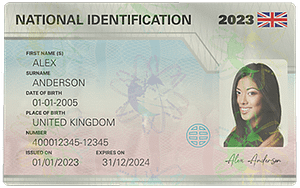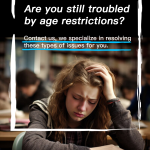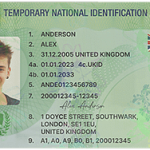Understanding Real ID: Basics and Federal Mandates
Real ID refers to a standardized form of identification issued by U.S. states and territories that meets federal security standards set by the REAL ID Act of 2005. This legislation, passed in response to 9/11, aimed to enhance national security by creating uniform criteria for state-issued driver’s licenses and identification cards. Starting May 7, 2025, a Real ID-compliant license or ID will be required to board domestic flights, enter most federal facilities, or access nuclear power plants. Non-compliant IDs, including standard driver’s licenses in many states, will no longer serve these purposes.
To obtain a Real ID, applicants must provide specific documents proving identity, social security status, and residency. These typically include a birth certificate or passport, a social security card or W-2 form, and two proofs of current address (e.g., utility bills, bank statements). The process varies slightly by state, but the core requirements remain consistent across the country. Despite these clear guidelines, confusion persists among the public about what qualifies as valid documentation, which agencies issue Real IDs, and whether the card is mandatory for all citizens.

Why Community Centers Are Critical for Real ID Outreach
Community centers occupy a unique space in local ecosystems. They serve as hubs for education, social interaction, and resource distribution, making them ideal for bridging gaps between government mandates and public understanding. Unlike large federal or state agencies, community centers operate at a hyper-local level, fostering trust through consistent presence and personalized engagement. For many residents—especially older adults, non-English speakers, or low-income households—these centers are the first point of contact for reliable, accessible information.
Consider a rural community where the nearest Department of Motor Vehicles (DMV) office is an hour away. Residents may avoid visiting the DMV due to time constraints, transportation issues, or anxiety about navigating complex bureaucratic processes. A local community center, however, can host pop-up information sessions, distribute printed materials in multiple languages, or even invite DMV representatives to answer questions on-site. This reduces barriers to access and ensures that marginalized groups, who are often most affected by compliance deadlines, receive the support they need.

Strategies Community Centers Use to Boost Real ID Awareness
Effective awareness campaigns require more than just posting flyers. Community centers leverage their strengths to create multi-faceted initiatives that resonate with their specific demographics. Here are key strategies they employ:
- Workshops and Q&A Sessions: These events break down Real ID requirements in simple terms. Facilitators guide attendees through document checklists, explain common pitfalls (e.g., expired birth certificates), and demonstrate how to replace lost or damaged records. For example, a workshop in a Hispanic community might include bilingual staff to address language barriers, while a session in a senior center could focus on step-by-step assistance for older adults.
- Partnerships with Local Agencies: Community centers often collaborate with DMV offices, libraries, and social service organizations. These partnerships allow them to share resources, host joint events, and refer residents to specialized help. For instance, a center might co-host a “Real ID Day” with the DMV, where staff pre-screen documents to ensure applicants have everything needed before visiting the DMV, reducing wait times.
- Digital and Print Materials: Centers create easy-to-understand guides, infographics, and checklists tailored to local needs. These materials are distributed at community events, mailed to households, or shared on social media. In areas with low internet access, physical copies are prioritized; in tech-savvy neighborhoods, digital campaigns (e.g., Facebook Live Q&As) may be more effective.
- One-on-One Assistance: Trained volunteers or staff offer personalized help to residents struggling with documentation. This could involve helping someone request a replacement birth certificate from their state’s vital records office, explaining how to update a name on official documents, or clarifying residency requirements for non-citizens.
Measuring the Impact of Community-Led Awareness Efforts
Tracking the success of Real ID awareness campaigns helps community centers refine their approaches. Metrics include:
- Attendance at Workshops: High turnout indicates interest, but follow-up surveys can reveal if attendees feel prepared to apply for a Real ID.
- Document Submission Rates: Partnering with local DMVs to track how many residents from the community center’s service area successfully apply for Real IDs after attending events.
- Reduction in Misinformation: Surveys or informal feedback can show if common myths (e.g., “Real IDs are only for U.S. citizens”) are being dispelled.
- Community Feedback: Testimonials from residents who overcame barriers—such as a single parent who finally applied after a center helped gather her child’s documents—highlight the human impact of these efforts.
Common Questions About Real ID and Community Involvement
Even with outreach, many residents have questions. Below are five frequent concerns and how community centers address them:
1. “Do I really need a Real ID, or can I use my passport?”
Problem: Many people believe a passport substitutes for a Real ID in all situations, but passports are not always practical (e.g., for daily use). Solution: Community centers clarify that while passports are valid for domestic flights and federal access, Real IDs are more convenient for routine use. They help residents decide based on their lifestyle—frequent travelers may prefer a passport, while others benefit from a Real ID.
2. “I don’t have a birth certificate. How do I get one?”
Problem: Lost or unobtainable birth certificates are a major hurdle, especially for older adults or those born in other countries. Solution: Centers provide step-by-step guidance on requesting replacement certificates, including contact information for state vital records offices. They also assist with alternative documents (e.g., hospital birth records, early school records) if a birth certificate is unavailable.
3. “The DMV is too busy. Can a community center help me avoid long lines?”
Problem: DMV wait times deter many from applying. Solution: Some centers offer “pre-check” services where staff review documents before an appointment, ensuring applicants have everything needed. This reduces the chance of being turned away and shortens in-person visits.
4. “I speak limited English. Will I get help understanding Real ID requirements?”
Problem: Language barriers prevent non-English speakers from accessing information. Solution: Community centers provide materials in Spanish, Chinese, Arabic, and other local languages. They also train bilingual staff or recruit volunteers to lead workshops, ensuring clear communication.
5. “Is my personal information safe when applying for a Real ID?”
Problem: Privacy concerns are common, especially with data breaches in the news. Solution: Centers explain that Real ID compliance includes strict security protocols to protect data. They share resources from the Department of Homeland Security (DHS) that outline how information is stored and used, easing fears about misuse.



